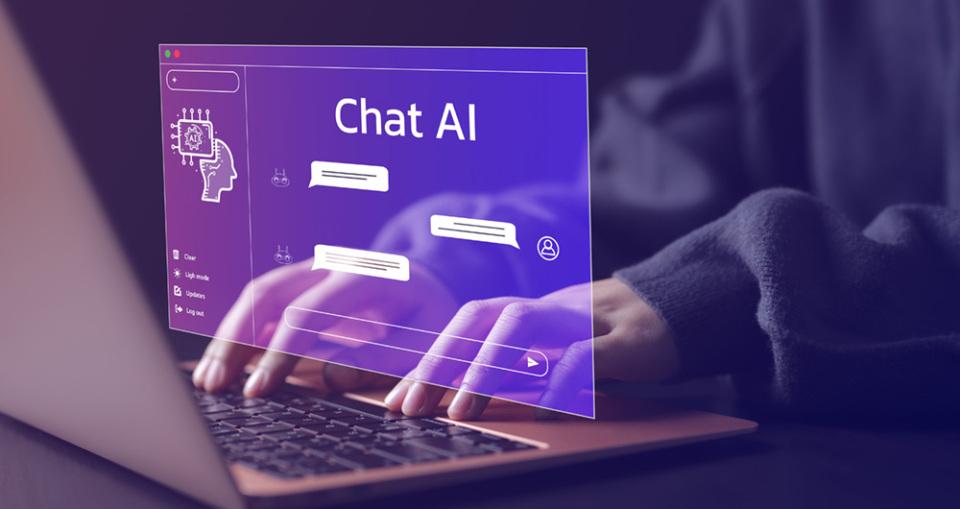
We live surrounded by AI-generated summaries. We have had the option of generating them for months, but now they are imposed on digital platforms as the first content that our eyes see when using a search engine or opening an email thread. On platforms such as Microsoft Teams or Google Meet, video call meetings are transcribed and summarized in automatic minutes for those who have not been able to be present, but also for those who have been there. However, what a language model has considered important, is it really important for the person receiving the summary?
In this new context, the key is to learn to recover the meaning behind so much summarized information. These three strategies will help you transform automatic content into an understanding and decision-making tool.
1. Ask expansive questions
We tend to summarize to reduce content that we are not able to cover, but we run the risk of associating brief with significant, an equivalence that is not always fulfilled. Therefore, we should not focus from the beginning on summarizing, but on extracting relevant information for us, our context, our vision of the situation and our way of thinking. Beyond the basic prompt "give me a summary", this new way of approaching content that escapes us consists of cross-referencing data, connecting dots and suggesting hypotheses, which they call sensemaking. And it happens, first of all, to be clear about what we want to know.
Practical situation:
Imagine a long meeting that we have not been able to attend. That afternoon, we received in our email a summary of the topics discussed. It's not always possible, but a good practice at this point, if our organization allows it, is not to just stay with the summary: if allowed, and always respecting confidentiality guidelines, upload the full transcript to a conversational system such as Copilot or Gemini and ask specific questions:
-
Which topic was repeated the most or received the most attention during the meeting?
-
In a previous meeting, person X used this argument. Was it used again? Did anyone discuss it? Was it considered valid?
-
What premises, assumptions or beliefs are behind this decision that has been made?
-
At the end of the meeting, what elements seem most critical to the success of the project?
-
What signs anticipate possible delays or blockages? Which ones have to do with or could affect my team?
Beware of:
First of all, review and confirm the attributions. Generative models are becoming more and more accurate, but they have a great ability to mix real information with false or generated information. For example, they can attribute a phrase to someone who did not say it, relate ideas as cause and effect that were not really connected, and surely most importantly: assign tasks or responsibilities for next steps to someone who does not correspond.
2. Ask for structured content
Good summaries are not shorter, but more organized, and the written text is not the only format we can use. Look for efficiency and ask conversational systems to return tables, categories, decision lists or relationship maps. Form conditions thought: if you structure information well, you will understand it better and also transmit it better to others, and therefore you will go further with it.
Practical situation:
In this case, let's imagine that we received a long report on the progress of several internal projects of our company. The document has many pages with paragraphs descriptive of status, feedback, dates, unforeseen events, risks and budgets. Reading everything line by line would be impossible and we would not retain the information. The good practice here is to ask for a transformation of the document that is really useful to us. If possible, upload the report to the conversational system and request structured content in a demanding way and without skimping on details:
-
Organize the report in a table with the following columns: project, responsible, delivery date, status, and a final column that indicates if any unforeseen event has occurred or any risk has materialized. If all goes well, print in that column "CORRECT".
-
Generate a visual calendar with deliverables, their due dates, and assignees, starting on October 1, 2025 and ending on January 31, 2026, in the form of a Gantt chart.
-
I want a list that only includes the name of the projects, their start date, and their due date. Sort by delivery date, closest first.
-
From the customer feedback section that you will find in each project, create a table with the most repeated comments and which areas or teams they usually refer to. Place them in order, from the most repeated to the least.
-
Give me the billing of the projects that are at risk of not meeting deadlines, indicate the price of each one and the total.
Beware of:
The illusion of veracity and completeness that a clean, orderly, automatic text with fonts will provide us is enormous. A clear format, such as a table, list, or map, can give a false sense of accuracy. If the source data is incomplete or wrong, the structure only makes up the error and we will have a harder time seeing it. AI productions are usually almost perfect. At the very least, and if the document is very long, do random checks ignoring the form and focusing on the content.
3. Connect the dots
Strategic sense is rarely in an isolated text, let alone in a summary. The advanced level in this case consists of asking the multimodal chat to cross-reference sources, compare versions or detect patterns between various materials or formats, such as the transcript of a meeting, an internal report and a scientific article. What is really interesting to see are comparative keys such as evolutionary changes, absences or inconsistencies.
Practical situation:
Let's imagine that we are preparing a proposal for a new project. We have several materials: the transcript of a management team meeting, the previous year's internal report, and a recent article on industry trends. Instead of summarizing them separately, you can upload them to the same conversation thread or chat you've customized on the topic, and ask for more ambitious actions.
-
Compare these three documents and tell me which priorities coincide in all of them, even if they are expressed in different ways.
-
What topics in the internal report were not mentioned at the meeting? Generate a hypothesis for each one as to why they have not been treated.
-
What ideas in the article might reinforce or challenge ours? Give me ideas that are not reflected in our internal report.
-
Look for articles in the press from the last six months that support the strong ideas of the internal report.
-
Find external sources that complement the information missing in these three documents on topic X, and generate a panoramic report with references.
Beware of:
It is very common for AI systems to deceptively simplify complex discussions, not because they have a hidden purpose but because they have always been rewarded for simplicity and clarity in training. In addition, automatic generation introduces a risk of authority: because the text is presented with the appearance of precision and neutrality, we assume that it is valid and useful. And if that wasn't enough, structured summaries are copied and shared quickly. Before forwarding, make sure that the content is validated, especially if it contains sensitive decisions, names, or data.
AI-based models can help you visualize convergences, gaps, or contradictions and, from there, formulate hypotheses or lines of action. It is about finding with greater agility what is so valuable that we call insights. That is the step from summary to analysis: the most important thing is not to compress the information, but to select it well, relate it and connect it with the context. Intensifying the demand from the prompt is the most appropriate way to work with AI systems, but it also requires a previous personal effort of analysis and landing.
Content created by Carmen Torrijos, expert in AI applied to language and communication. The content and views expressed in this publication are the sole responsibility of the author.


